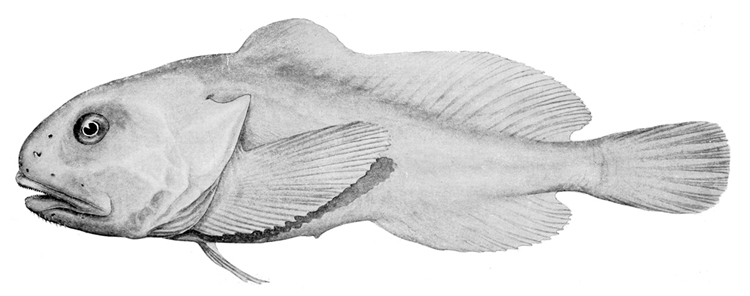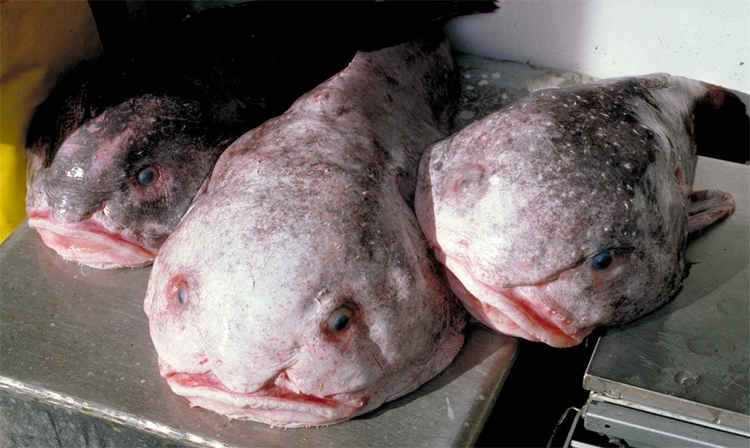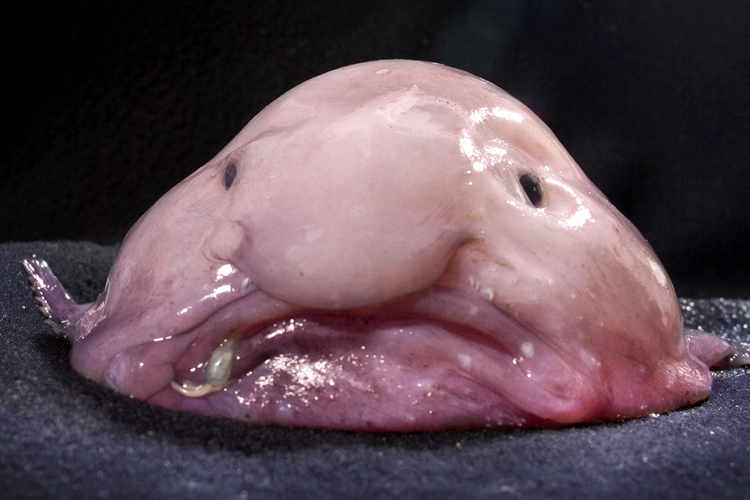Some people say this slimy pink fish is bizarre and monstrous; others will tell you that it is cute and adorable. Meet the blobfish.
The animal has already been voted and named the world's ugliest animal in a campaign to raise awareness of endangered and aesthetically challenged sea creatures.
This weird yet intriguing animal is scientifically known as Psychrolutes marcidus.
The blobfish was discovered in 2003 by marine ecologist Kerryn Parkinson while on an ocean expedition off New Zealand.
The peculiar species, also known as smooth-head blobfish, is a deep-sea marine creature living off the southeastern coast of mainland Australia and Tasmania and New Zealand waters.
The gelatinous, strange-looking fish swims in underwater regions where the pressure is 60 to 120 times greater than at sea level, i.e., at depths ranging from 2,000 to 3,900 feet (600 to 1,200 meters).

The Anatomy of the Blobfish
These animals have different anatomy compared to other fish.
For example, they don't have a swim bladder, which allows them to control buoyancy. If blobfish had these gas-filled sacs, they would implode.
These marine animals don't have a full skeleton or muscles, and the stomach is inside their body.
Their bodies are made up of a blobby substance with a slightly lower density than water, allowing them to float above the seafloor.
Unlike many other fish species, the blobfish doesn't have scales - instead, they have loose, flabby skin.
With large black eyes, a large mouth, and a bulbous nose, the blobfish features a globulous head that makes up 40 percent of its body mass.
These deep-sea fish swimmers have a single closed circulatory system.
They can reach more than two feet in length, but they are typically one foot long on average.
Food and Reproduction
One interesting fact about blobfish is that they have a unique way of eating.
Because they live in such deep, cold waters, there is not a lot of food available. As a result, blobfish have to be able to survive on a very restricted diet.
They are able to do this by using a process called "ram feeding," which involves sucking in small crustaceans, including crabs and lobsters, sea urchins, mollusks, and other small sea creatures that happen to drift by.
They sit on the bottom of the ocean and wait for prey to come into their mouth.
This allows the blobfish to get enough energy to survive without expending too much energy searching for food.
Another interesting fact about blobfish is that they have a unique way of reproducing.
Females lay up to 100,000 eggs in a single nest in rocky areas, on top of deep ocean platforms with warmer water temperatures.
Then, they patrol the waters until they are ready to hatch and give birth to fully formed baby blobfish.
Their reproduction rate is slow, as well as their growth and aging. In fact, they can live up to 130 years.

Blobfish and Humans
The blobfish is a threatened species.
According to marine researchers, there are only 420 individuals left in the world's oceans.
With its extremely acidic flesh and gelatinous body, the blobfish is not edible. Paradoxically, fishermen are blobfish's main predators.
The species is on the verge of extinction due to overfishing.
They often get accidentally caught up as bycatch in trawling nets and die as soon as they are exposed to air.
Although rarely seen, a Japanese public aquarium has a blobfish on display.
The bizarre-looking pink creature doesn't bite because it has no teeth, so it poses no threat to humans.
The blobfish is the official mascot of The Ugly Animal Preservation Society, an informal association of stand-up comedians that aims to protect some of Nature's more aesthetically challenged species.
Strange Looks and The Evolution of the Species
Although they appear gelatinous and bulbous, blobfish look like regular fish in their natural environment and habitat, i.e., at great depths.
It's only when they are brought to the surface, suffer decompression damage, and their body collapses that they look like an obese man or a slime blob.
Marine biologists believe that the jelly-like, deep-water animal evolved from fish that had air sacs but had to compete with others for food.
Without these air sacs and equipped with a gelatin mass, the specimen can find nutrients at high depths, where there's less competition.
The Australian Museum calls it "Mr. Blobby."
